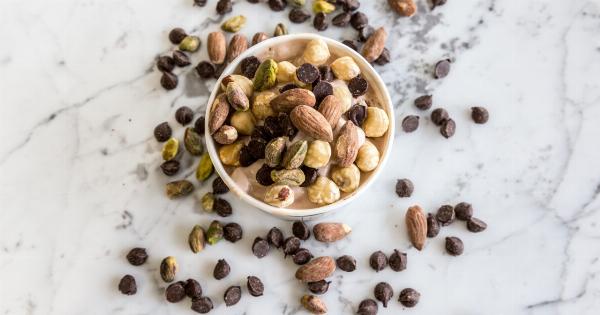When it comes to managing diabetes, keeping blood sugar levels in check is crucial. A balanced diet plays a vital role in maintaining stable blood sugar levels, and incorporating nuts into your daily routine can be highly beneficial.
Nuts are not only a great source of healthy fats, protein, and fiber, but they also have a low glycemic index, which means they do not cause a sudden spike in blood sugar levels.
In this article, we will explore the various types of nuts that are beneficial for individuals with diabetes and how they help balance blood sugar levels.
Additionally, we will discuss the recommended daily intake, creative ways to incorporate nuts into your diet, and some delicious recipes that feature nuts as a key ingredient.
Types of Nuts for Diabetes
1. Almonds:.
Almonds are a fantastic choice for individuals with diabetes. They are rich in healthy fats, magnesium, and fiber, all of which contribute to better blood sugar control.
Eating almonds can help reduce insulin resistance and improve overall insulin sensitivity.
2. Walnuts:.
Walnuts are packed with omega-3 fatty acids and have been found to have positive effects on heart health. They also help in preventing and managing type 2 diabetes by improving insulin sensitivity.
Incorporating walnuts into your diet can also help control hunger, aiding in weight management efforts.
3. Pistachios:.
Pistachios are not only delicious but also provide numerous health benefits. They are a good source of monounsaturated fats, fiber, and antioxidants.
These factors help lower blood sugar levels, improve blood lipid profiles, and reduce the risk of cardiovascular diseases.
4. Cashews:.
Cashews are a great addition to any diet, especially for people with diabetes. They are rich in monounsaturated fats, which are known to improve glucose control and reduce the risk of developing heart disease.
Cashews are also an excellent source of magnesium, which plays a crucial role in regulating blood sugar levels.
5. Brazil nuts:.
Brazil nuts stand out due to their high selenium content. Selenium is an essential mineral that helps regulate glucose metabolism and improve insulin sensitivity.
Including Brazil nuts in your diet in moderation can be highly beneficial for individuals with diabetes.
Recommended Daily Intake of Nuts
While nuts offer numerous health benefits, it is crucial to consume them in moderation, especially for individuals with diabetes. Nuts are high in calories, so portion control is key.
The American Diabetes Association suggests consuming around 1.5 ounces or a small handful of nuts per day.
It is essential to remember that nuts should be incorporated into a well-balanced diet alongside other foods to ensure you meet all your nutritional requirements.
Consulting a healthcare professional or a registered dietitian is advisable to determine the appropriate serving sizes and dietary adjustments based on your individual needs.
Creative Ways to Incorporate Nuts into Your Diet
1. Snack on nuts:.
Carry a small container of mixed nuts with you to curb hunger pangs or satisfy your snack cravings. Nuts make for a convenient and healthy on-the-go snack option.
2. Add them to salads:.
Enhance the flavor and texture of your salads by sprinkling some toasted nuts on top. This also adds a nutritional boost to your meal.
3. Blend into smoothies:.
Add a spoonful of nut butter or a handful of nuts to your morning smoothie for added creaminess, texture, and nutrients.
4. Use as a coating:.
Instead of using breadcrumbs, crush nuts to coat chicken or fish before baking or cooking. This adds a crunchy texture and enhances the overall taste.
Delicious Recipes Featuring Nuts
1. Almond-crusted salmon:.
Ingredients:.
- 4 salmon fillets
- ½ cup almonds, finely chopped
- 2 tablespoons Dijon mustard
- 1 tablespoon olive oil
- Salt and pepper to taste
Instructions:.
- Preheat the oven to 375°F (190°C) and line a baking sheet with parchment paper.
- Season the salmon fillets with salt and pepper.
- In a small bowl, combine the chopped almonds, Dijon mustard, and olive oil.
- Coat the top of each salmon fillet with the almond mixture.
- Place the coated fillets on the prepared baking sheet and bake for 12-15 minutes or until the salmon is cooked through.
- Serve hot with a side of steamed vegetables or a fresh salad.
2. Walnut and spinach salad:.
Ingredients:.
- 4 cups fresh spinach leaves
- ½ cup walnuts, roughly chopped
- ¼ cup dried cranberries
- ¼ cup crumbled feta cheese
- 2 tablespoons balsamic vinegar
- 1 tablespoon olive oil
- Salt and pepper to taste
Instructions:.
- In a large bowl, combine the spinach leaves, walnuts, dried cranberries, and feta cheese.
- In a small bowl, whisk together the balsamic vinegar, olive oil, salt, and pepper.
- Drizzle the dressing over the salad and toss gently to coat all the ingredients.
- Serve immediately as a refreshing and nutritious side dish.
Conclusion
Incorporating nuts into your diet can be a beneficial strategy for managing diabetes and balancing blood sugar levels. However, it is essential to consume nuts in moderation, as they are calorie-dense.
Consult with a healthcare professional or a registered dietitian to determine the appropriate serving sizes and ensure they align with your dietary requirements.
Nuts not only provide healthy fats, protein, and fiber but also have a low glycemic index, making them ideal for individuals with diabetes.
Including a variety of nuts in your diet, such as almonds, walnuts, pistachios, cashews, and Brazil nuts, can offer numerous health benefits, including improved blood sugar control and reduced risk of heart disease.
Get creative with your nut consumption by snacking on them directly, adding them to salads or smoothies, and using them as a coating for meats.
Try out the delicious recipes featuring nuts mentioned above to incorporate them into your meals in a flavorful way.































